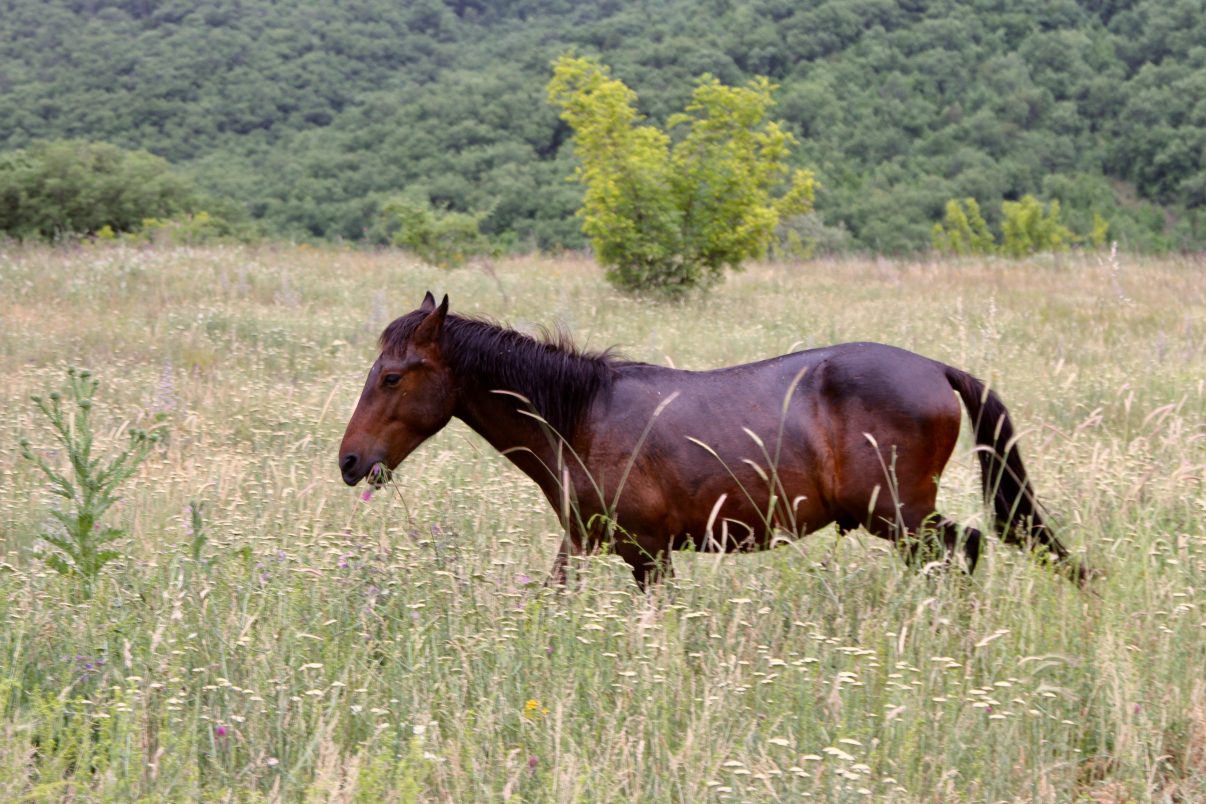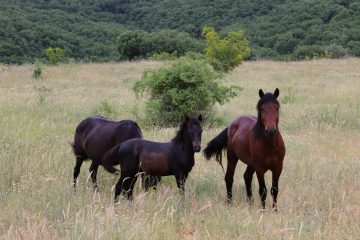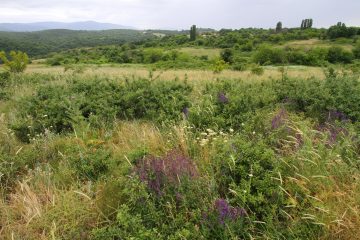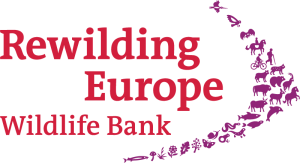Karakachan horse herds based in the Rhodope Mountains rewilding area are boosting local biodiversity through their free roaming grazing behaviour. Two new herd contracts begin their incorporation into the European Wildlife Bank.

The signing of two new herd contracts will see Karakachan horses continue to play a pivotal natural grazing role in the Rhodope Mountains rewilding area in Bulgaria as they enter the European Wildlife Bank (EWB). The so-called herd contracts, which cover a five-year period, were signed between Rewilding Europe and the Rewilding Rhodopes Foundation on June 24.
Contracts were signed for Karakachan herds based in two separate locations – 12 horses (11 mares and 1 stallion) in Byala Reka and 9 horses (8 mares and 1 stallion) in Studen Kladenets, both Special Protection Areas. Karakachan horses were first reintroduced into the former area in January 2016, and the latter in December 2016.

Rewilding Rhodopes team leader Stoycho Stoychev is thrilled to have signed the contracts and is happy to see the Karakachan becoming a well-integrated part of the local food chain.
“These horses are already having a positive impact by helping to create biodiversity-rich mosaic landscapes through their grazing,” says Stoychev. “Although they can defend themselves well, they may provide an important new food source for local predators such as wolves, and scavengers such as vultures, and are a magnificent spectacle for visitors to the area.”
There are currently four herds of Karakachan horses distributed across the Rhodope Mountains rewilding area, totalling more than 80 animals. The two outstanding herds, which are located in Boturche and Kostilkovo, will hopefully be incorporated into the EWB in the coming months.
Fit for purpose
A large part of Europe’s biodiversity is based around open grassland, mosaic landscapes and their transition to forest edges, which all rely on herbivorous grazing for their existence. Yet rising levels of land abandonment, leading to a reduction in livestock numbers, mean that such grazing is now increasingly absent. As large areas become overgrown with shrubs and forests as a result, so their biodiversity is declining.

Rewilding Europe wants to reverse this decline by returning Europe’s native herbivores – such as horses, as well as bovines, chamois and ibex – in significant and naturally balanced numbers to the lands where they once belonged. We are currently reintroducing wild horses in three of our pilot areas: the Rhodope Mountains, the Velebit Mountains of Croatia, and Western Iberia. In the Rhodope Mountains Rewilding Europe has introduced both Konik and Karakachan breeds across multiple sites.
Relatively small, with an average height at withers (the ridge between the shoulder blades) of just under 130 cm, the Karakachan is a primitive breed of horse that is a good fit for rewilding landscapes. Extremely hardy, it is perfectly suited to a wild life in the Rhodope Mountains. The animals are accustomed to living amongst predators, and are able to defend themselves well against the wolves and golden jackal of the area.
Banking on wildlife
Launched in 2013, Rewilding Europe’s European Wildlife Bank (EWB) facilitates the reintroduction and restocking of original native herbivores to European rewilding areas by “lending” animals. The bank retains control over these animals by making herd contracts with third parties such as local land managers and owners.
After five years, at the expiry of the contract, half the number of the reintroduced herbivores (taking account of “interest” on the loan, which is the annual growth of the population) are returned to the EWB to found new populations elsewhere, or to supplement existing populations at the same site. The remaining animals are retained by the loanee and continue to graze and propagate.
With animals supplied to nearly 20 sites across Europe to date, the EWB has already proven very successful. The bank itself has also prospered, increasing from 600 to nearly 800 animals over the last four years.

